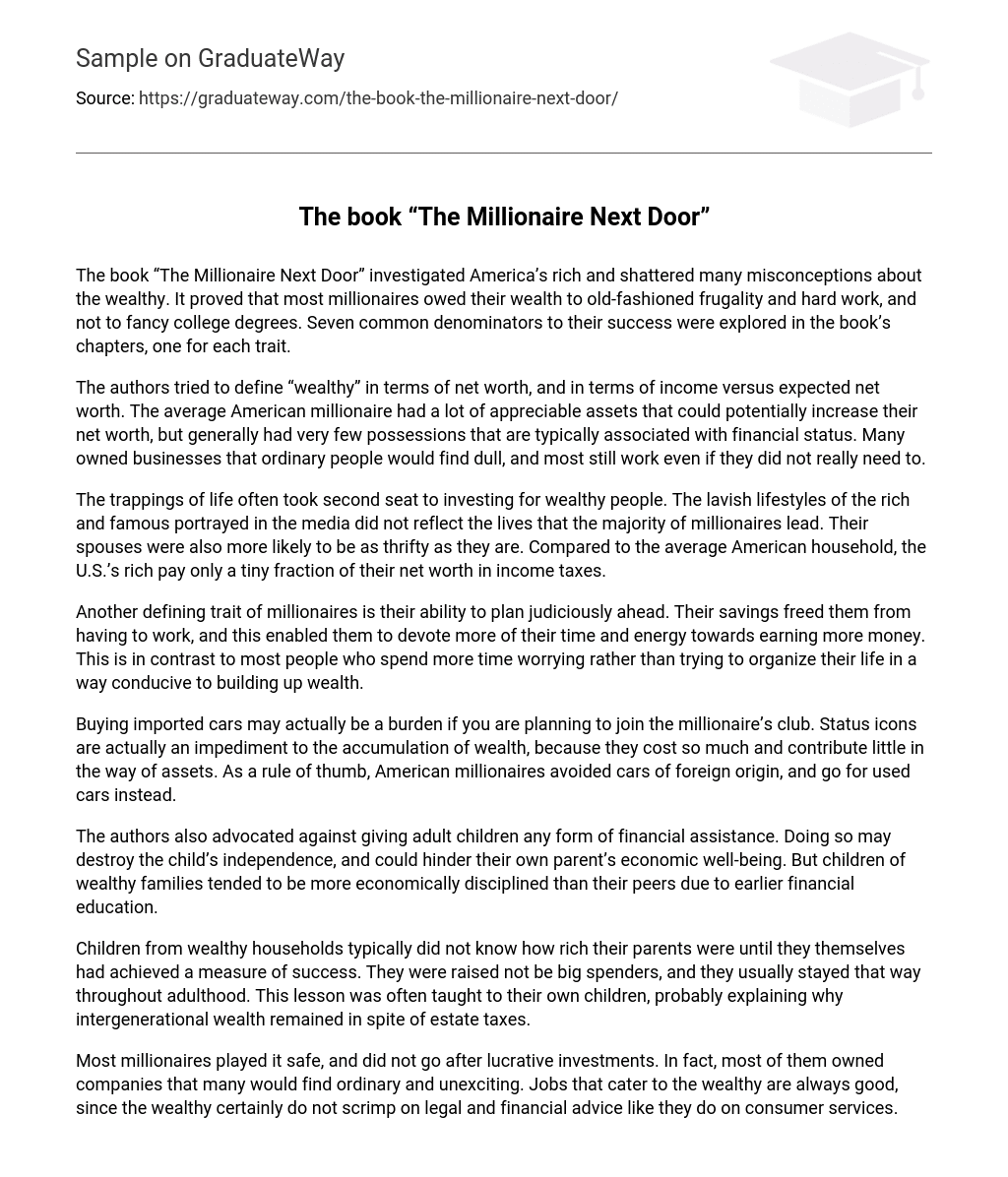The book “The Millionaire Next Door” investigated America’s rich and shattered many misconceptions about the wealthy. It proved that most millionaires owed their wealth to old-fashioned frugality and hard work, and not to fancy college degrees. Seven common denominators to their success were explored in the book’s chapters, one for each trait.
The authors tried to define “wealthy” in terms of net worth, and in terms of income versus expected net worth. The average American millionaire had a lot of appreciable assets that could potentially increase their net worth, but generally had very few possessions that are typically associated with financial status. Many owned businesses that ordinary people would find dull, and most still work even if they did not really need to.
The trappings of life often took second seat to investing for wealthy people. The lavish lifestyles of the rich and famous portrayed in the media did not reflect the lives that the majority of millionaires lead. Their spouses were also more likely to be as thrifty as they are. Compared to the average American household, the U.S.’s rich pay only a tiny fraction of their net worth in income taxes.
Another defining trait of millionaires is their ability to plan judiciously ahead. Their savings freed them from having to work, and this enabled them to devote more of their time and energy towards earning more money. This is in contrast to most people who spend more time worrying rather than trying to organize their life in a way conducive to building up wealth.
Buying imported cars may actually be a burden if you are planning to join the millionaire’s club. Status icons are actually an impediment to the accumulation of wealth, because they cost so much and contribute little in the way of assets. As a rule of thumb, American millionaires avoided cars of foreign origin, and go for used cars instead.
The authors also advocated against giving adult children any form of financial assistance. Doing so may destroy the child’s independence, and could hinder their own parent’s economic well-being. But children of wealthy families tended to be more economically disciplined than their peers due to earlier financial education.
Children from wealthy households typically did not know how rich their parents were until they themselves had achieved a measure of success. They were raised not be big spenders, and they usually stayed that way throughout adulthood. This lesson was often taught to their own children, probably explaining why intergenerational wealth remained in spite of estate taxes.
Most millionaires played it safe, and did not go after lucrative investments. In fact, most of them owned companies that many would find ordinary and unexciting. Jobs that cater to the wealthy are always good, since the wealthy certainly do not scrimp on legal and financial advice like they do on consumer services.
Due to the nature of their upbringing, heirs are not usually as efficient at asset allocation compared to people who were not born into privilege. They generally spent more than is necessary to support the lifestyle they were accustomed to, and could not match the investing power of a thrifty, self-made man.
Sources:
Stanley, Thomas J., and William D. Danko. The Millionaire Next Door. Atlanta: Longstreet Press. 1996





